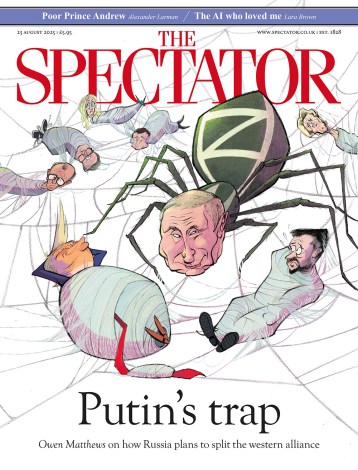This week it was revealed in the Telegraph that World Athletics is engaged in a confidential consultation with national governing bodies over the question of whether transwomen should be allowed to compete in the female category.
World Athletics’ current rules allow males to compete in the female category if their legal sex is female and they have held their serum testosterone levels below 5 nMol/l for 12 months. Their ‘preferred option’ in the consultation is to change the acceptable testosterone level to 2.5 nMol/l for 24 months.
All this talk of nanomoles and serum testosterone is a dramatic misdirection
Lord Coe, president of World Athletics, announced in November that athletics will ‘follow the science’ – but how scientific is this proposal?
We all know that the scientific method dictates that theories must be backed by data. But this is not the only scientific precept. Another crucial scientific principle is ‘Occam’s razor’, also known as the principle of parsimony. This asserts that when faced with two competing explanations of the same facts, you should choose the simplest explanation.
By choosing a model with two factors (legal sex and serum testosterone) rather than one (actual sex) World Athletics are ignoring this basic principle of science.
World Athletics are following the lead of the International Olympics Committee who have enshrined the rejection of Occam’s Razor in Principle 6.1(b) of their guidance on trans inclusion.
This principle says that sports bodies decide the eligibility criteria for trans athletes, they are only able to use data from studies based on athletes in the sport in question.
Why is this a problem? Let me illustrate with an example.
In the high jump in the Tokyo Olympics the male medallists were all 189 cm tall or above. Based on US data and the fact that US males are taller than average worldwide, I estimate that this means the medallists are in the top 3 per cent of males by height. The evidence of your eyes is correct: high jumpers are tall.
It is also true that males are on average taller than females. I’ll spare you the figures.
Nevertheless, the international Olympics committee will not accept that it follows that male puberty confers an unfair advantage in the high jump until someone publishes a peer-reviewed study specifically of transgender elite male high jumpers confirming the result in this case. It goes without saying that no serious journal would publish such a study because the results are blindingly obvious.
Meanwhile, when it comes to trans athletes the actual science is simple: there is no evidence that gender identity – as opposed to sex – has any effect upon sporting performance. All this talk of nanomoles and serum testosterone is a dramatic misdirection.
By contrast to the absurdities coming from international sports bodies, the UK’s Sports Councils’ Guidance for Transgender Inclusion in Sport is a far more serious look at the science. It found that testosterone suppression is unlikely to be enough to achieve a level playing field between male and female athletes. The report acknowledged the polarised nature of the debate on trans inclusion and concluded that governing bodies need to choose between ‘the inclusion of transgender people’ and ‘fairness and safety.’
Their conclusion though is also incorrect. It is true that current athletics rules exclude people who do not accept the reality that human sex is binary by requiring them to state their sex. However, this could be easily fixed by scrapping the ‘male’ category and replacing it with an open category. Trans athletes could compete without needing to reveal their sex, as could the minority of athletes who believe that sex is a social construct and irrelevant to sport. At the same time females who believe in science would still have the opportunity for fair competition within the female category.
The choice faced by governing bodies is not one of fairness and transgender inclusion; it is a choice between fairness and the affirmation of an athlete’s gender identity.
How should sports governing bodies make this choice? One might assume that part of the answer would be to consult their members, and especially their female and trans members. Unfortunately UK Athletics have been unwilling to hold a public consultation. In a climate where women athletes are frightened to speak out, UK Athletics must do more to ensure than they can do so safely.
To help UK Athletics understand the view of their members, this week I, with a number of fellow runners, conducted a survey of the views of UK Athletics volunteers on transgender inclusion. We contacted 416 randomly selected running clubs using contact details published on the internet and asked the volunteer who received our message to give us their personal view on whether they support World Athletics’ preferred option; or if they believe athletes who have undergone male puberty should not be able to compete as females. Of the 63 respondents who expressed a view, 87 per cent opposed World Athletics’ position.
Despite the small sample size, support for World Athletics’ position is so low that this is statistically significant.
The survey is significant not just because athletics club volunteers are particularly well-informed, but also because UK Athletics will rely on volunteers to implement these policies. The principle of parsimony is important here too. Everybody knows their sex; very few of us know the maximum level of our serum testosterone over the last 24 months. Grassroots volunteers need rules that can be implemented in practice at a local 5k race, not just at the Olympics.
Since news of the confidential consultation was leaked, there have been rumours that World Athletics is willing to rethink and may ultimately support open and female categories, thereby achieving the holy grail of fairness and inclusivity. This is excellent news and provides a hint that World Athletics may be willing to champion science after all. Evidence and parsimony are crucial principles of science, but there is another: we should seek out our own mistakes, admit them and learn from them.







Comments